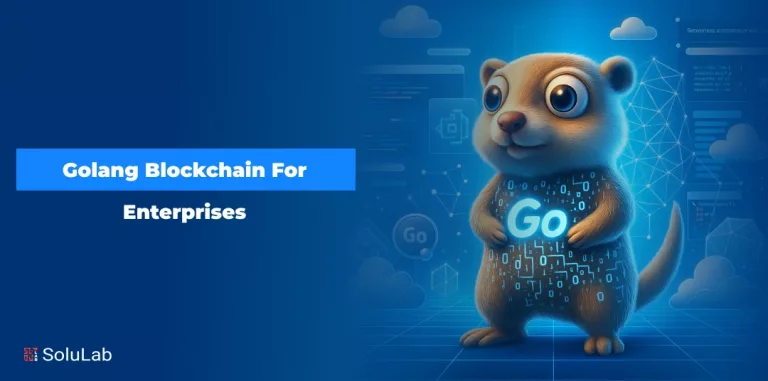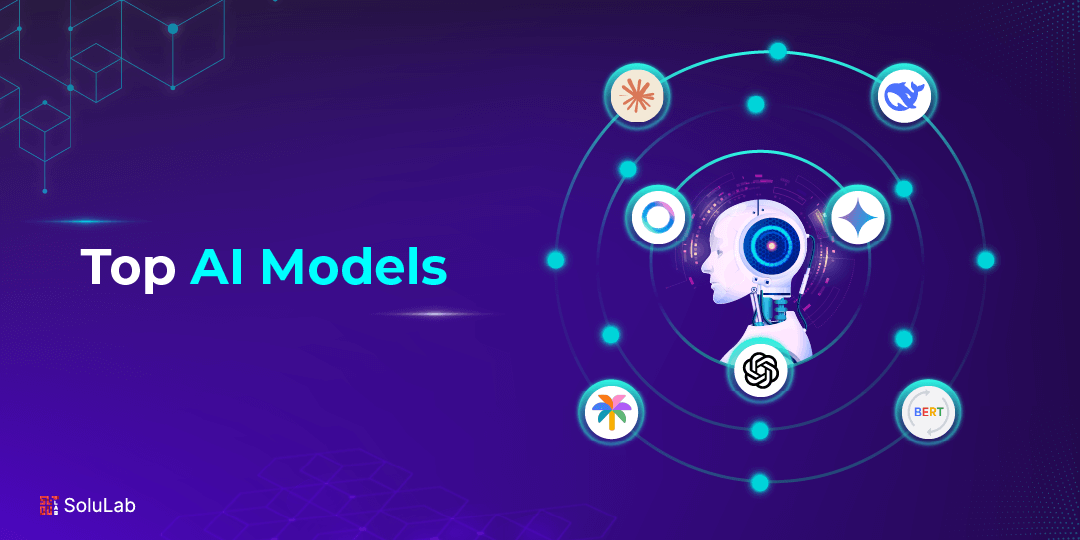
Struggling to keep up with all the new AI models popping up every few months? With every tech giant, Google, OpenAI, Anthropic, and Meta, releasing new models one after another, it’s confusing which one to choose.
Whether you’re a developer, marketer, researcher, or just AI-curious, choosing the right model for your needs can feel like searching for a needle in a digital haystack.
In this blog, you’ll discover the 10 most popular AI models in 2025—the ones that are leading the pack across industries. From content generation to code writing, from image creation to enterprise-grade automation, we break down each model’s strengths, features, and ideal use cases. So, if you want to stay ahead in the AI game without drowning in jargon, this guide is for you. Let’s get started!
How to Select the Best AI Model?
The global AI market is valued at approximately $391 billion in 2025 and is projected to increase fivefold over the next five years.
Here’s a simple guide to help you select the best custom AI model development, especially if you’re choosing between options like GPT, Claude, Gemini, etc. You can also test prompts from multiple providers using an All-in-One AI tool to find out which one gives the best results for your needs.
1. Define Your Use Case
- Content Generation: Look for top AI LLM models like GPT-4 or Claude.
- Image creation/editing: Use image-based models like DALL·E or Midjourney.
- Data analysis/code: Models like GPT-4.5 (Code Interpreter) or Code Llama work well.
- Conversational AI or chatbots: Look at performance in real-time conversations (e.g., GPT-4-turbo, Gemini Pro).
2. Check Model Accuracy & Performance
Look at benchmarks like MMLU, HumanEval, etc., if you’re into technical details.
For general users:
- GPT-4: Best overall language understanding and reasoning.
- Claude 3 Opus: Great for summarization and long-context understanding.
- Gemini 1.5 Pro: Strong with code and multilingual understanding.
- Mistral: Great open-source options if self-hosting.
Read Also: How to Create an Open-Source AI Model like Llama?
3. Consider Pricing
Are you okay with subscriptions?
- GPT-4 via ChatGPT Plus = $20/month.
- Claude Pro and Gemini Advanced are similarly priced.
Need an API for apps?
- Compare cost per token (OpenAI, Anthropic, Google).
- Check if the provider offers INR billing or international card support for India-specific pricing.
4. Match with Your Specific Needs
- Need long-context memory (e.g., analyzing PDFs): Claude 3 Opus or Gemini 1.5 Pro (can handle 1M tokens).
- Need tool usage (code, browsing, images): GPT-4-turbo (with tools) is best.
- Prefer open-source/self-hosting: Use models like LLaMA, Mistral, or Falcon.
10 Best AI Models To Watch Out for in 2025
Here’s a list of top AI models like ChatGPT and more. Let’s discuss each model one by one:
1. GPT-5
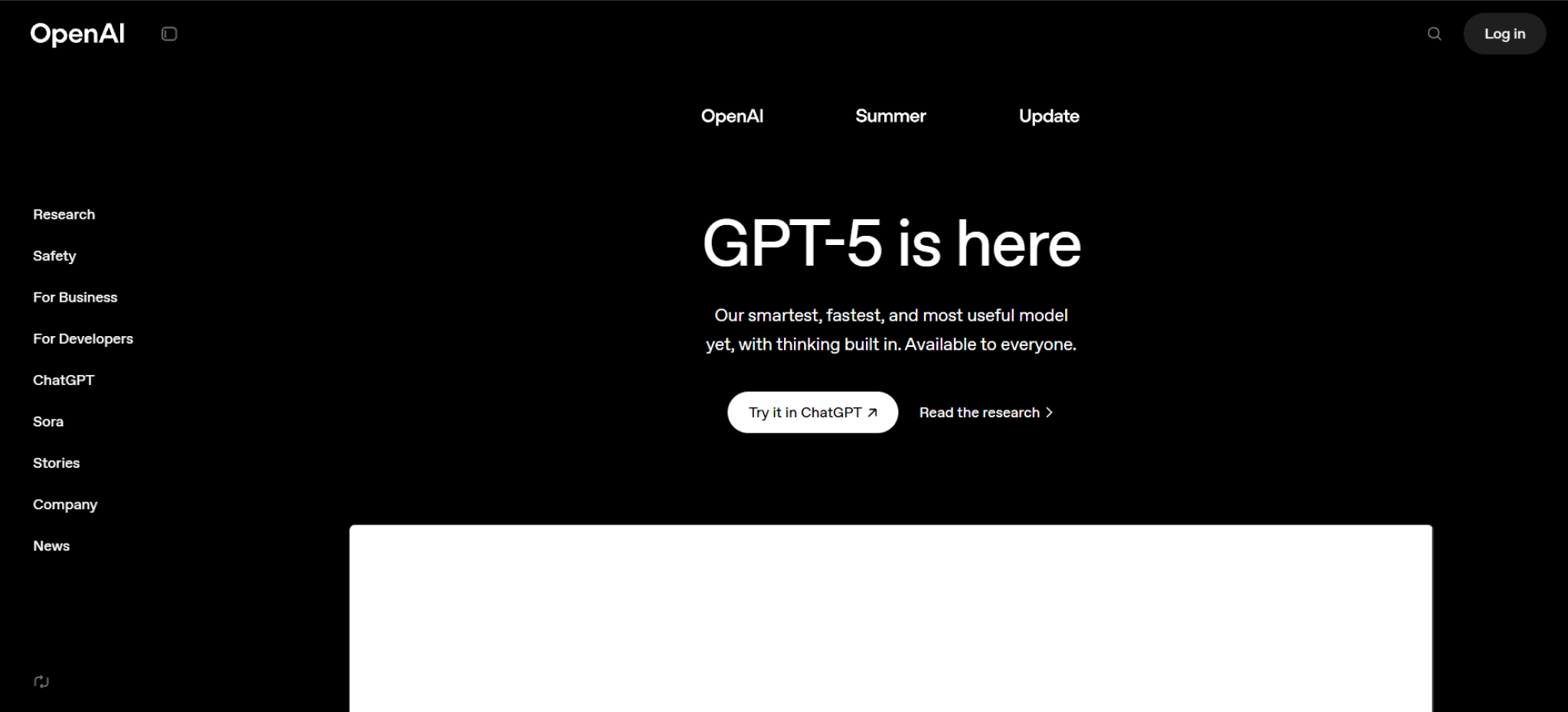
GPT-5 is OpenAI’s most advanced multimodal AI model, launched in 2025. It seamlessly integrates text, audio, image, and even video understanding within a single model, enabling real-time reasoning, visual interpretation, and multilingual communication across more than 60 languages. Designed to deliver context-rich, human-like interactions, GPT-5 responds with remarkable speed and accuracy.
With enhanced multimodal capabilities, GPT-5 can process and generate text, audio, images, and videos for a wide range of use cases. Its expanded language support and advanced reasoning abilities make GPT-5 a powerful, globally versatile AI for both personal and enterprise applications.
2. Gemini 2 Pro
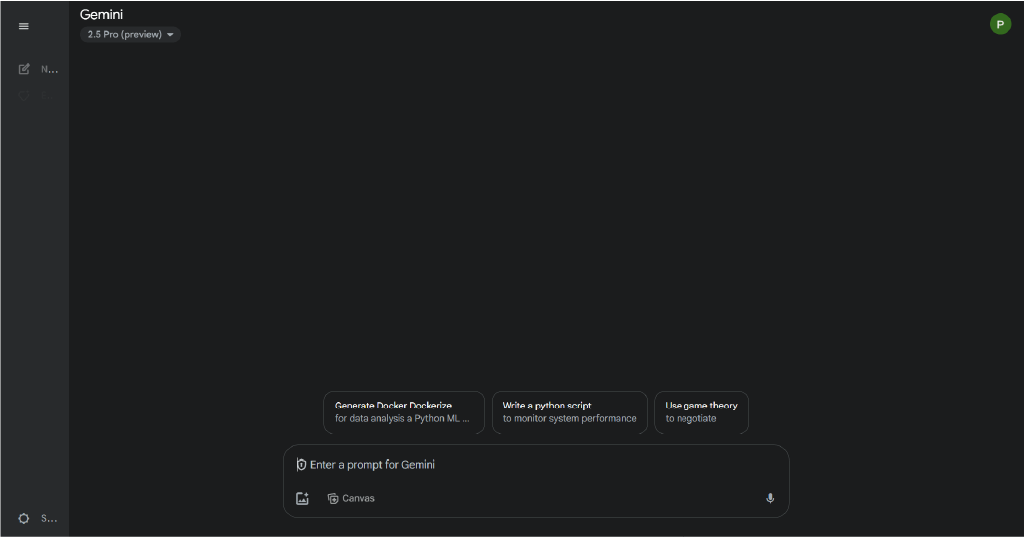
Gemini 2.5 Pro is Google’s most advanced AI model as of 2025, designed to handle complex tasks across various domains. It excels in reasoning, coding, and multimodal understanding, making it a go to tool for developers, researchers, and businesses as well . With its enhanced capabilities, Gemini 2.5 Pro sets a new standard in AI performance and reliability.
It offers superior coding abilities, helping developers transform, edit, and build visually rich web apps while optimizing workflows and debugging software. The model also excels in generating sophisticated code. Additionally, its multimodal capabilities integrate text, code, images, and other media for a richer user experience.
3. Claude 3.7 Sonnet

Claude 3.5 Sonnet, developed by Anthropic, is an AI model development that excels in various domains, including natural language processing applications, coding, and visual understanding. Positioned as a mid-tier model in the Claude 3.5 series, it offers a balance between performance and cost-effectiveness, making it suitable for a wide range of applications. With a 200,000-token context window, it can handle extensive conversations and complex tasks efficiently.
Anthropic’s latest model excels in advanced reasoning and coding, significantly outperforming its predecessor, Claude 3 Opus. It features enhanced visual processing, allowing it to interpret charts, graphs, and even transcribe text from unclear images—making it ideal for industries like retail and logistics.
4. DeepSeek-R1
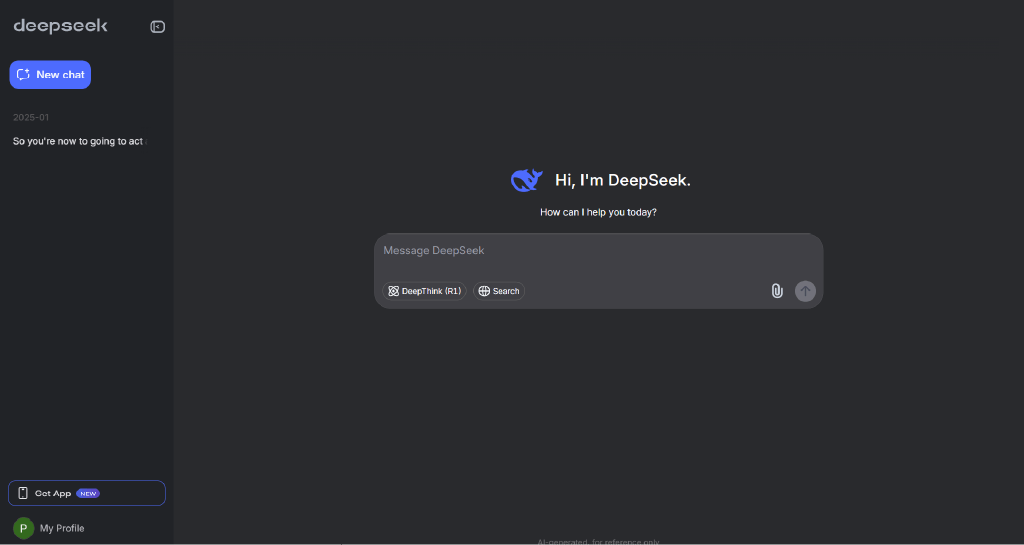
DeepSeek-R1 is a custom AI model developed by the Chinese startup DeepSeek, renowned for its advanced reasoning capabilities and cost-effective architecture. Launched in 2025, DeepSeek-R1 has garnered significant attention for its performance. Models like OpenAI’s GPT-4, while being developed at a fraction of the cost. Notably, Microsoft CEO Satya Nadella acknowledged DeepSeek-R1 as the first AI model to come close to OpenAI’s offerings.
DeepSeek- R1 offers strong reasoning abilities, especially in logical and multi-step problem solving, Multilingual support, making it useful for global communication and content, and Open-source and developer-friendly, ideal for custom fine-tuning and integration into applications
5. OpenAI o1
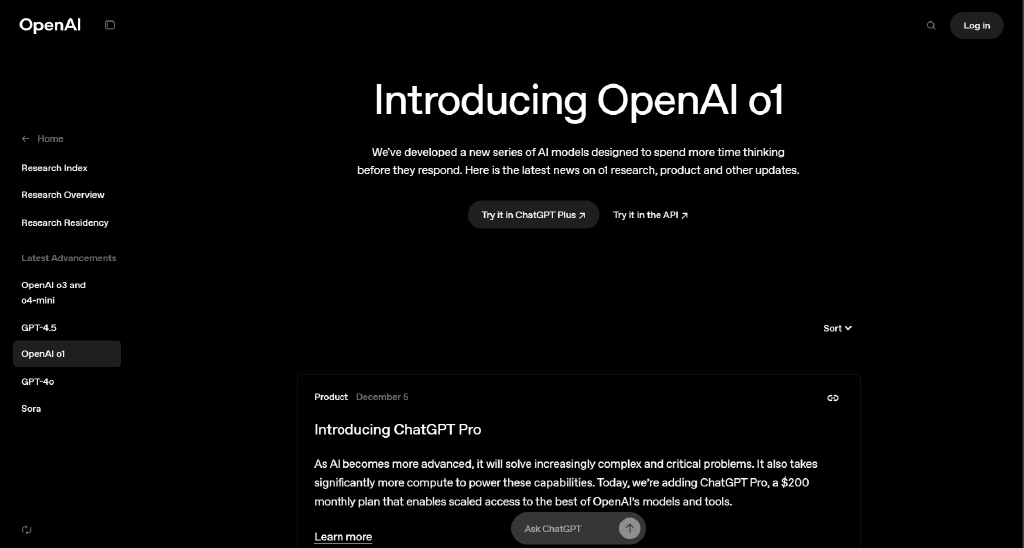
Unlike its predecessors that prioritize rapid responses, OpenAI O1 shows deep, step-by-step reasoning, making it exceptionally adept at complex problem-solving tasks in mathematics, science, and programming. This “chain-of-thought” approach allows the model to simulate human-like analytical processes, enhancing its capability to tackle intricate challenges.
The O1 model comes with advanced reasoning abilities, using a “chain-of-thought” approach to break down complex problems for improved accuracy. OpenAI has also enhanced its safety protocols, ensuring stronger alignment and resistance to misuse. These upgrades make O1 both powerful and secure for enterprise-level applications.
6. OpenAI o3-mini
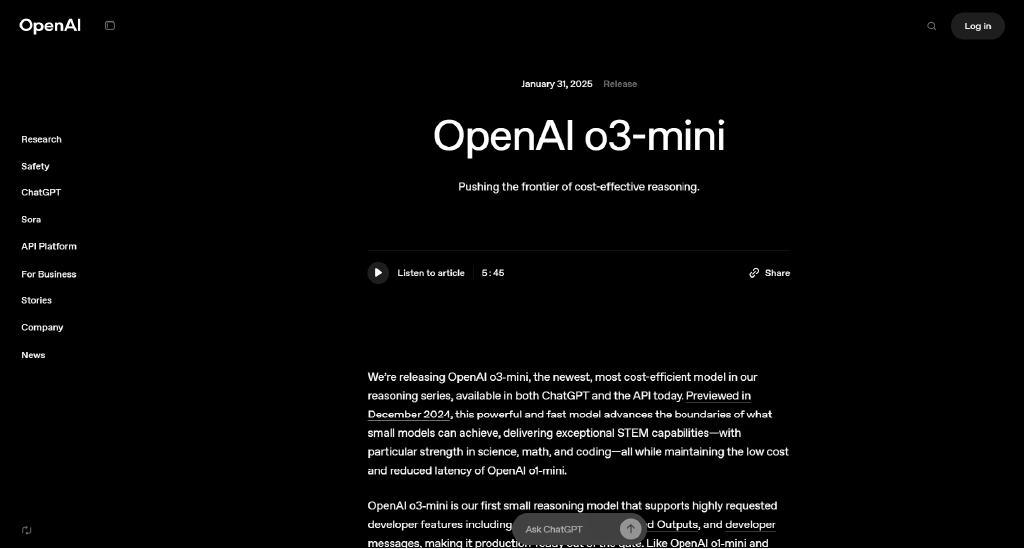
OpenAI o3-mini is a compact yet powerful AI model introduced in early 2025, tailored for tasks requiring strong reasoning capabilities, particularly in science, technology, engineering, and mathematics (STEM) domains. Designed to be more efficient and cost-effective than its predecessors, o3-mini offers faster response times and improved accuracy, making it suitable for both individual users and developers seeking a reliable AI tool for complex problem-solving.
The platform offers adjustable reasoning levels, letting users choose between low, medium, or high reasoning to balance speed and depth. It includes developer-friendly tools like function calling, structured outputs, responses, and developer messages for easy integration. With enhanced performance, it delivers responses about 24% faster than O1-Mini. Accuracy in tasks such as math, coding, and science has also significantly improved.
7. Meta AI (Llama Series)
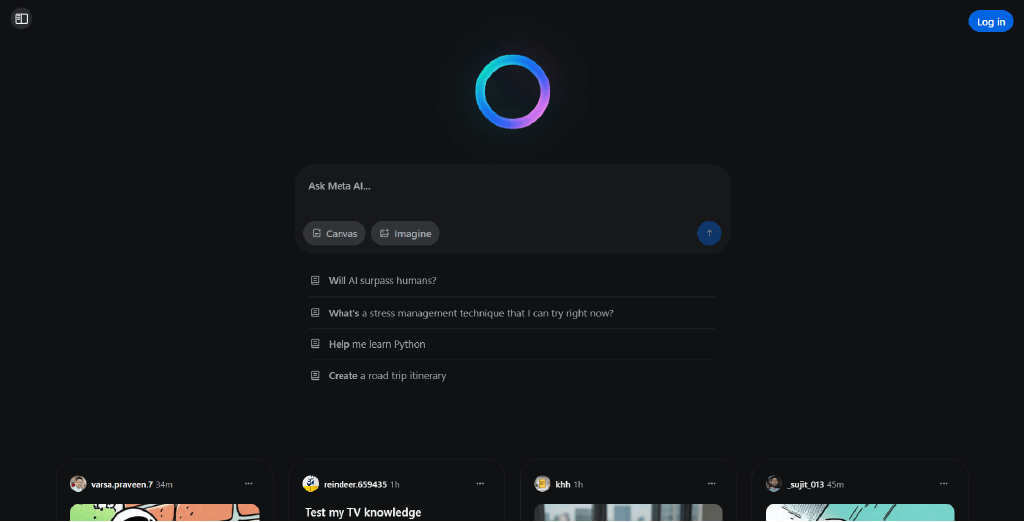
The LLaMA (Large Language Model Meta AI) series by Meta is an open-source family of powerful AI models designed for researchers and developers. The latest, LLaMA 3 (2025), delivers high performance and is popular among those who want to build or fine-tune AI applications without relying on closed APIs. LLaMA models are optimized for efficiency, making them suitable for both cloud and on-device deployment.
Meta AI is ideal for developers looking to self-host or fine-tune models. It also competes with GPT-level models while being resource-efficient and supports diverse applications from summarization to chatbots.
8. Google Gemini

Google Gemini is a multimodal AI model developed by Google DeepMind, designed to process and generate content across various formats, including text, images, audio, and video. As of 2025, the latest iteration, Gemini 1.5 Pro, showcases significant advancements in long-context understanding, multimodal capabilities, and efficiency, positioning it as a formidable competitor to models like GPT-4 and Claude 3.
Gemini 1.5 Pro offers an extended context window of up to 1 million tokens, making it capable of processing large datasets like books, codebases, or lengthy media content. It excels in multimodal processing, handling text, images, audio, and video. Additionally, it has deep integration with the Google ecosystem—Gmail, Docs, Android, and Drive.
9. BERT
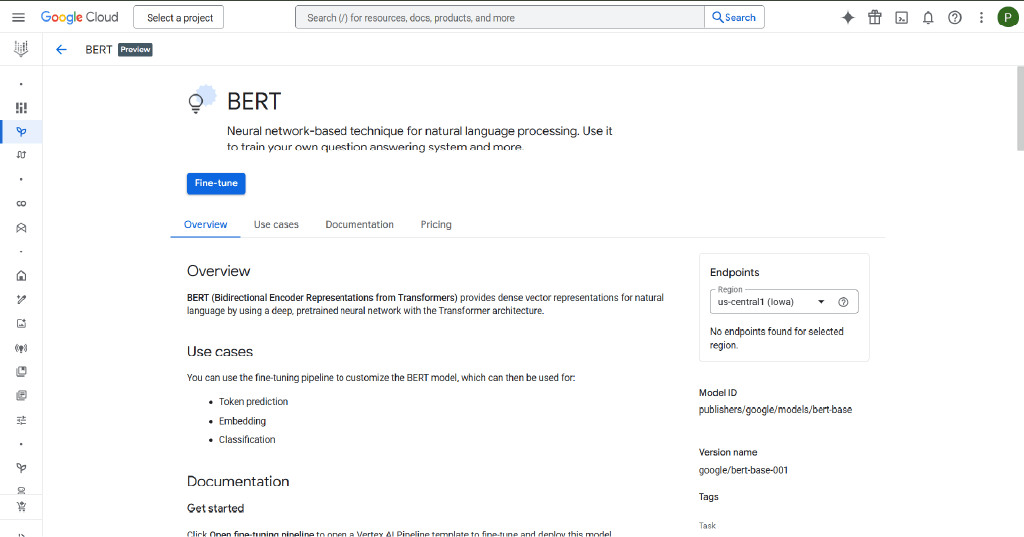
BERT, developed by Google, is an NLP model that changed how machines understand human language. Though released in 2018, it remains highly relevant in 2025 due to its foundational architecture, which powers many modern AI systems. BERT excels at tasks like question answering, sentiment analysis, and language inference by understanding the context of words in both directions (left and right). It’s often used as a base for custom fine-tuned models in industries like healthcare, legal, and finance.
This model offers bidirectional context understanding, enabling deeper language comprehension. It is pre-trained on massive text corpora and can be easily fine-tuned for specific NLP tasks. Being open-source, it is widely adopted across industries. Additionally, it enjoys strong community support, driving continuous improvements and real-world applications.
10. PaLM 2
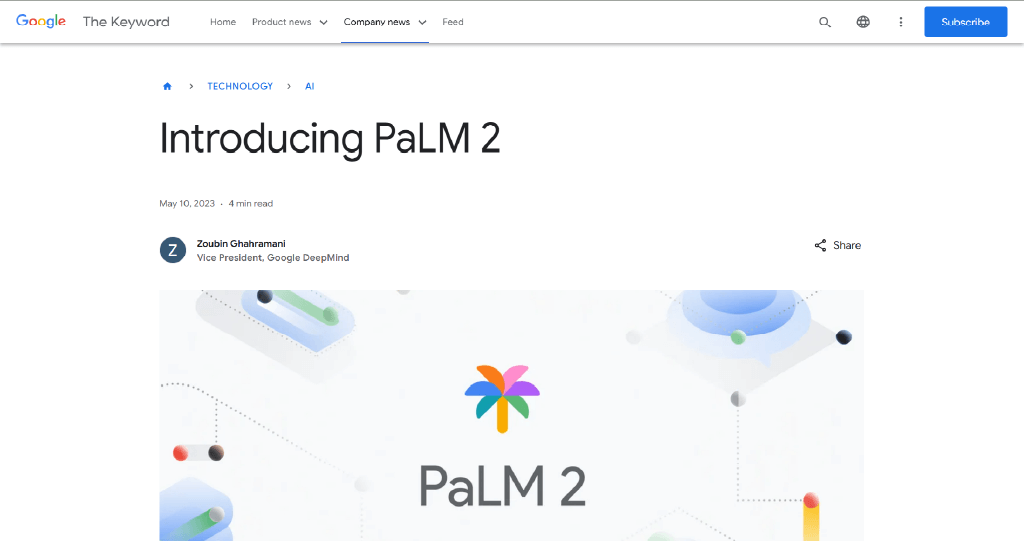
PaLM 2 (Pathways Language Model 2) is Google’s advanced language model launched in 2023 and still used in 2025 for multilingual tasks, reasoning, and code generation. Though it’s been succeeded by Gemini models, PaLM 2 remains a solid AI model for those using Google’s older AI services like Bard (pre-Gemini) and Workspace AI tools. It’s lightweight, fast, and optimized for tasks like summarization, translation, and Q&A. It supports over 100 languages, making it ideal for global content creation, multilingual workflows, and use cases powered by AI writing assistant software, such as those featured on Spotsaas.
This model stands out with its strong multilingual capabilities, supporting over 100 languages, making it ideal for global teams. It excels in solving logic, reasoning, and math problems with high accuracy. Additionally, it’s optimized for integration with Google Workspace, including Docs, Gmail, and other essential tools.
Conclusion
In 2025, AI models will have advanced and become more powerful and accessible than ever before. From advanced language models like GPT-4 and Claude 3 to specialized tools like Midjourney and BERT, each model serves a unique purpose, be it content creation, code generation, or deep language understanding. Businesses are now also partnering with fine-tuning AI development companies to customize these models for specific use cases, ensuring better performance and relevance.
Choosing the right custom AI model depends on your specific use case, performance needs, and budget. Staying updated with the latest innovations can give you a competitive edge. Whether you’re a developer, business owner, or creative, there’s an AI model out there designed to supercharge your work.
AI-Build partnered with SoluLab to revolutionize CAD product development using generative AI and ML models. SoluLab developed a scalable architecture, automated design generation with GANs and CNNs, and added real-time error detection. The result: enhanced productivity, reduced manual work, and intelligent, customizable designs with improved quality control.
SoluLab, an AI development company can help you pick the right AI model as per your business requirements. Contact us today to discuss further.
FAQs
1. Are these AI models free to use?
Many models offer limited free versions, but full access usually requires a subscription or API payment.
2. Can I use these AI models for business automation?
Yes, models like GPT-4 and Gemini are commonly used for automating customer service emails, reports, and internal workflows.
3. Which AI model is best for handling large documents?
Claude 3 Opus and Gemini 1.5 Pro can process extremely long inputs—up to 1 million tokens.
4. Is BERT still relevant in 2025?
Yes, most popular AI models offer APIs (like OpenAI, Anthropic, Google Cloud) for integration, and you can also partner with a fine-tuning AI development company to customize these models for your specific business needs.
5. Can I integrate these models into my app or website?
Yes, most popular AI models offer APIs (like OpenAI, Anthropic, Google Cloud) for integration.


